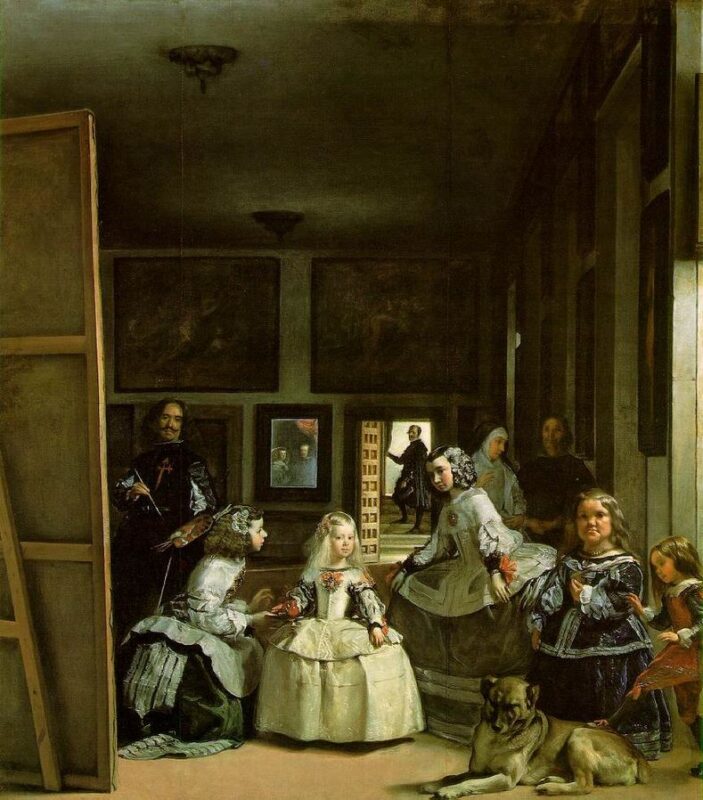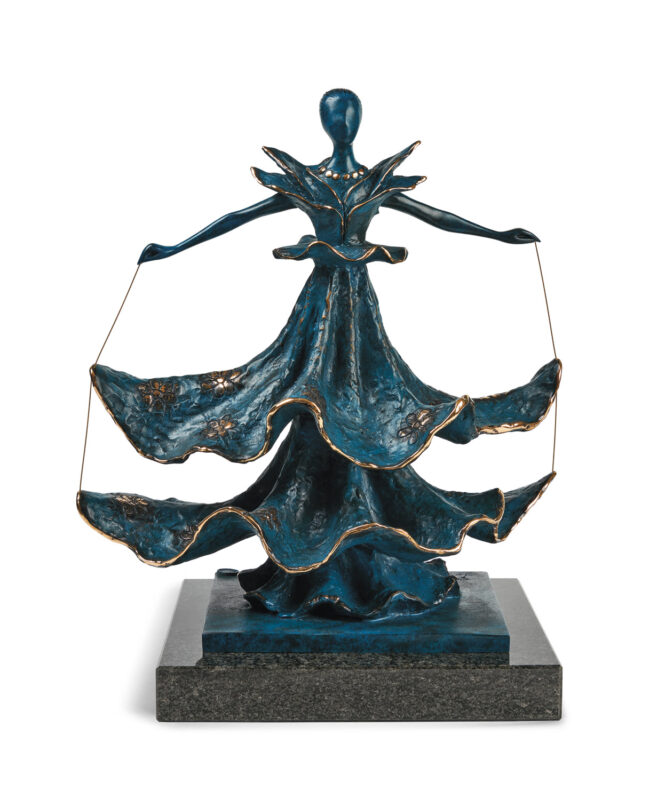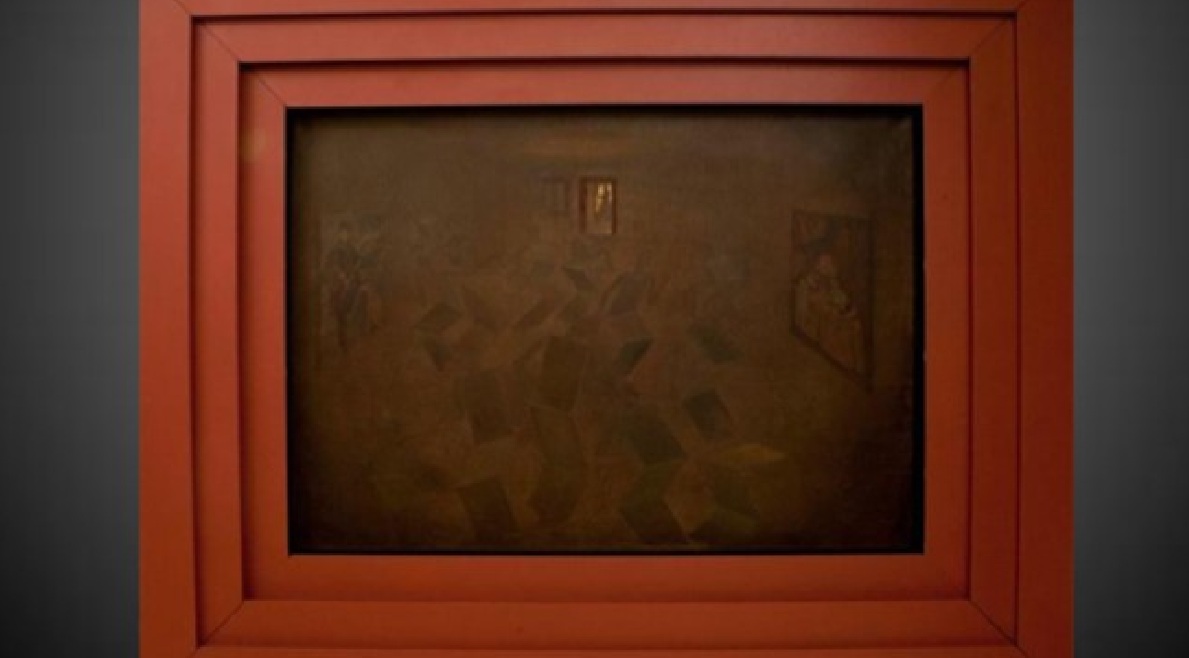“The only thing that counts is images. I only care for the sum of information contained in old masters, … One of the least questionable paintings I know, Velázquez’s Las Meniñas, provided me with a cascade of astounding information. As for the spirit of this work, it accurately reproduces an epoch, and that’s why I take off my hat to it. The people depicted offer me information of an incredible precision and I feel I know the painting down to the smell inhabiting the Infanta’s house. Velázquez also teaches me something about light, reflections, and mirrors—and he teaches me a lot more than whole scientific volumes. His work is an inexhaustible treasure hoard of computation and exact data”.
Salvador Dalí
.
Dalí’s three favourite painters were Raphael, Vermeer, and Velázquez. Salvador Dalí’s admiration for Diego Velázquez was solidified by Velázquez’s masterpiece “Las Meninas”, painted in 1656, which is one of the most celebrated works of the Spanish Baroque.
Salvador Dalí frequently visited the painting and, tipping his hat, would simply say: “I’m content to say that the painting is sublime and beautiful.”
.

.
According to Dalí, art history would have followed a very different path without Velázquez’s influence. The Catalan artist famously stated: “Without Velázquez and the painters imitating him, and without the Prado Museum, neither Monet nor Manet would have existed. The same phenomenon repeated itself: there would have been no cubism without Juan Gris and Picasso.”
In “Twist en el estudio de Velázquez” (1962), Salvador Dalí sought to capture and amplify the emotions and sensations he felt while observing and admiring Velázquez’s “Las Meninas”.
Salvador Dalí aimed to look beyond the painting, to observe what could not be seen at first glance, using his self-developed method, the “paranoiac-critical method”, which he described as: “a spontaneous method of irrational knowledge based on the interpretative-critical association of delirium phenomena”.
.

.
The painting “Twist en el estudio de Velázquez” is a clear example of Dalí’s extraordinary ability to transfer his obsessions and elements of popular culture into art according to a Dalinian, paranoiac, and hallucinatory logic.
On the left side of the painting, Dalí pays homage to Diego Velázquez by illustrating his personal vision of “Retrato del Cardinal-Infante Fernando de Austria” (1609). On the right, Dalí presents a detail from Velázquez’s Las Meninas (1656). However, the center of the composition is dedicated to the Twist, the fast-paced dance popular in the 1960s.
Salvador Dalí had a fascination with dance, which played a prominent role in his life and extensive body of work. The theme of the Twist highlights Dalí’s passion for dance, a passion that began in his childhood due to the influence of his father, Salvador Dalí y Cusí, a lawyer and notary with a love for music and dance. He loved the Sardana, a Catalan dance symbolising unity and pride, and he passed this interest on to his son, who incorporated dance as a source of inspiration in his art.
Salvador Dalí once said: “When I wake up, I see the dancers jumping in my mind. As I focus on the image, I draw them before they disappear”.
In the masterpiece “Twist en el estudio de Velázquez”, the Catalan Master breaks down the dancing human figure into flat, schematic planes, illustrating movement with a surreal perspective that allows the viewer to perceive unexpected, fresh, and distinctly Dalinian images.
The group of human figures, depicted as crumpled and folded cards, transforms the painting into a celebration of movement and dance. This same concept was later used by Dalí in the creation of his sculpture “Dalinian Dancer”, which emphasizes Dalí’s passion for flamenco, demonstrating how dance could stimulate the artist’s mind and fuel his creative development.

.
Through “Twist en el estudio de Velázquez”, Dalí reveals his profound admiration for the leading artist of the Spanish Baroque, Diego Velázquez, his passion for dance, and his desire to incorporate the popular Twist dance into art through his “paranoiac-critical method”.
In this sense, this masterpiece is certainly a key work for understanding Dalí’s universe, his vision, and his incredible ability to take the real and everyday world and channel it into a surreal one, made up of entirely different images, characteristic of Dalí’s unique universe.

